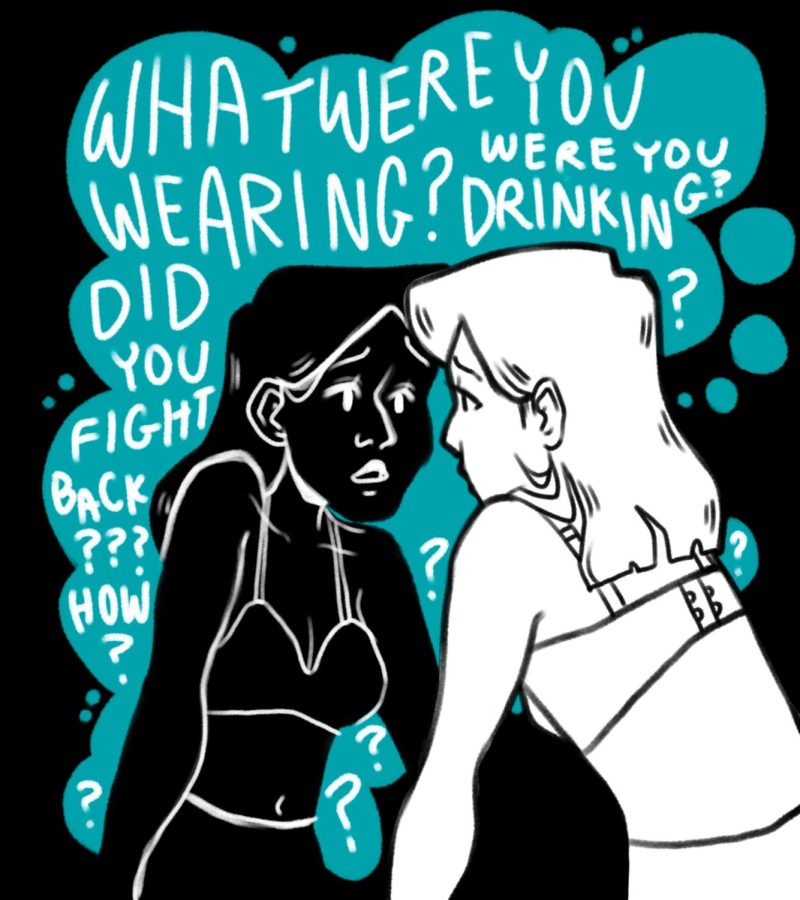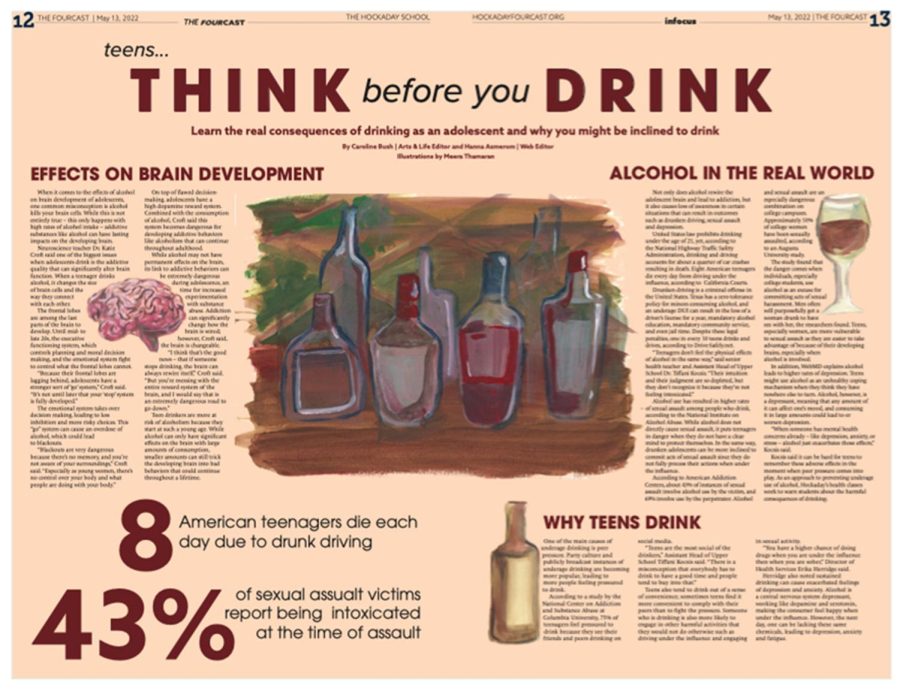As his fingers tremble, Vince* secretly locks the bathroom stall, lifts his JUUL to his lips, inhales, savors the nicotine buzz, and blows the vapor out in one big exhale.
Before going to school this morning, he promised himself that he wouldn’t make any trips to the bathroom today. But it’s the middle first period, and the headache is killing him. In his mind, vaping is the only thing that will ease the ache.
But what he doesn’t know is that he is only aggravating his nicotine addiction.
APPEALING TO USERS
The e-cigarette industry is a big business. Bis Research, a global market intelligence firm, reported that the global e-cigarette market was worth an estimated $8 billion in 2015. The United States accounts for 43 percent of that amount, the largest e-cigarette industry in the world. By 2025, the e-cigarette industry is predicted to quintuple in value and be worth $46.9 billion.
While the industry grows in monetary value, it is also increasing its influence among youths. In 2015, the number of minors using e-cigarettes was at its peak. It began its decline in 2016, but both in 2015 and 2016, the use of e-cigarettes exceeded the use of cigarettes and other tobacco products. As of 2016, over two million youths use e-cigarettes in the U.S.
How has the industry, specifically in the United States, gotten to this point? And how do they plan to satisfy the prediction? With persuasive and direct advertising.
In JUUL commercials, young adults dance around while colorful geometric shapes flash across the screen. Words like smoking, breakthrough and satisfaction blink on and off the screen, sending viewers into a psychedelic daze.
According to a 2014 Centers for Disease Control and Prevention survey, more than 18 million youths were exposed to e-cigarette advertisements that year. Whether it be on television, in movies or on billboards such as one on the Dallas North Tollway, the ads utilize the same themes: independence, rebellion and sex. These themes, which are also used to advertise conventional cigarettes, intrigue youths. In an anonymous and voluntary Fourcast survey sent to the Upper School, 94 percent of students said that they knew someone under the age of 18 who vapes.
Form IV Dean and Upper School health teacher Rebekah Calhoun believes that minors are attracted to vaping for this reason.
“[Vaping] makes users feel more mature,” Calhoun said. “They see themselves as being cool and sophisticated. Vaping has an added mystique because you can do it and no one knows you’re doing it because vapor dissipates quickly, so you can do it at school without getting caught.”
In addition to the thematic approach to advertising, e-cigarette companies have adopted different flavorings to appeal to younger customers. JUUL has seemingly harmless and fun flavors like Mango, Creme Brulee, Fruit Medley and Cool Mint. In an interview with Dr. Brian King, the Deputy Director for Research Translation from the CDC’s Office on Smoking and Health, King said that two-thirds of the youths who use e-cigarettes report using flavored varieties.
Flavoring is also the most common cited reason for why people start using e-cigarette products. Senior Ali Hurst, a strong advocate against vaping, has never tried vaping, and never wants to. But she believes that the flavoring in vapes targets teenagers.
“No one wants to be smoking tobacco [vapes]; people prefer mint, mango, vanilla. It’s like choosing a toothpaste flavor at the dentist. They make it kid-like,” Hurst said. “The flavors make vaping more accessible and more desirable for teens. No adult person who used to smoke cigarettes are out looking for berry flavored vapor– those things are marketed specifically for teenagers.”

WHAT YOU NEED TO KNOW
Electronic cigarettes, commonly known as “e-cigs,” “vapes” or “vape pens,” are battery powered devices that work by heating up an e-liquid, or “e-juice.” By inhaling the vapor into his or her lungs, the user experiences a head rush, a state that is colloquially called being “buzzed.”
E-juice contains nicotine (the amount varies from brand to brand), flavorings, propylene glycol and glycerin. However, other toxins can be released upon heating up the e-juice, including carcinogens like formaldehyde, acetaldehyde and acrolein, ingredients which have proven to be highly addictive.
E-cigs have three main components: a cartridge or reservoir, which is filled with e-liquid, a battery and an atomizer. Most of the time, companies combine the atomizer and the cartridge into a “cartomizer,” which means that they are disposable and therefore easier to use. The atomizer heats the e-liquid to its boiling point, resulting in a cloud of white smoke or vapor, which is where the term “vaping” comes from.
Chinese pharmacist Hon Lik, who was looking for an alternative way to quit smoking, created the first e-cig in 2003 . That same year, he filed the first patent and in 2004, the first e-cig was manufactured in Beijing.
Since then, e-cigs have skyrocketed in popularity. According to the National Institute on Drug Abuse, e-cigs are “the most commonly used form of tobacco among youths in the United States.” E-juice comes in a variety of flavors, ranging from plain tobacco to fruit and candy, thus appealing a wide audience.
A particularly popular e-cig among teenagers is the JUUL. Created by PAX Labs, JUUL is a discreet, slim device designed to fit in the palm of the user’s hand. Founders James Monsees and Adam Bowen created the JUUL as an alternative to smoking, with the intended audience of adult smokers who wish to wean off cigarette dependency. However, that—and the fact that being in possession of these products is illegal for minors—hasn’t stopped high schools students in the United States from getting a hold of one.
Out of 145 responses to the Fourcast survey, 67 percent of students replied that they knew of a minor who has used a JUUL. The JUUL has become a staple in the lives of many high schoolers across the nation.
THE RULES
The Texas Cigarette, E-Cigarette and Tobacco Products Law is “a comprehensive approach to reducing children’s access to e-cigarettes and all tobacco products.” Selling cigarettes, e-cigarettes and other tobacco products to a minor makes the employee “criminally responsible for the violation, which is a Class C misdemeanor.” The punishments of Class C misdemeanors include up to a $4,000 fine or up to a year in jail.
And PAX Labs adjusted their policies accordingly as of Aug. 23: now, when the delivery service drops off the order, they must ensure that the customer signing for the package must be at least 21 years old.
Vuse Vapor is an another e-cigarette company that produces a popular vape among minors: the Vuse Vibe. Teresa*, a Vuse Vibe user, did not have to go through intricate schemes to purchase her e-cigarette, because she asked an older friend to buy it for her.
“They have Vuse Vibes at 7-Eleven and you can just go in and ask for one. Sometimes they will check your ID, but sometimes they won’t,” Teresa said. “Every single 7-Eleven has them.”
Fifty-two percent of responders said that their friend simply asked an older friend to purchase the product for them.
“Even if you’re under the age of 18, someone 18 or older can easily go and buy products [for you] at a vapor store,” Hurst said. “It’s not an odd request.”
WHY DO STUDENTS VAPE?

In a scene from the movie “Breakfast at Tiffany’s,” the graceful and elegant Audrey Hepburn laughs in between drags of a cigarette. Like the pearls around her neck, her teeth glisten an unnatural white, and the shades covering her eyes add a mysterious feeling to her aura.
Since 1961, the year the movie was released and the beginning of the peak decade of cigarette culture, society has glamorized smoking. This crafted sentiment that smoking is “cool” has transgressed passed cigarette culture and into the contemporary vaping culture. In the Fourcast survey, 33 percent of respondents answered that they think minors vape because it “makes them look cool” or they “think it looks cool.”
“It’s a social aspect,” Nate*, JUUL user since Nov. 2016, said. “When I bring my vape out at parties, I can make friends and connect with people that I otherwise would not have talked to.”
When all the parties are over and everyone goes home, e-cigarette users have found ways in which vaping legitimately assists them. Nate, in addition to vaping for the social aspect, started vaping due to the circumstances of a taxing year.
“Last year especially was a very stressful year for me in my personal life, with my family and regarding relationships,” Nate said. “I also had untreated anxiety from the seventh grade, so [vaping] helped a lot to calm me down. I’m on medication for my anxiety now, but I still vape because it’s fun.”
Dr. Sidarth Wakhlu, a psychiatrist who specializes in addiction at UT Southwestern Medical Center, acknowledges the alleviation of anxiety, but stresses that it is only temporary.
“Nicotine blocks the perception of anxiety. The problem is, the effect of nicotine wears off, and the anxiety comes back with a vengeance,” Wakhlu said. “On top of anxiety, people have withdrawals, which makes the anxiety worse. Long-term, it worsens anxiety symptoms.”
REPERCUSSIONS
The specific long term effects of vaping are unknown. What scientists do know, however, is that the addictive properties of nicotine combined with developing adolescent brains leads to expedited addiction. Wakhlu believes that minors are especially susceptible to addiction.
“The neural circuits and pathways double up between the ages of 21 to 24. That’s why we have a legal age for drinking. If you use chemical substances that disrupt these pathways, that’s what lead to addiction,” Wakhlu said. “People tend to act first and think later.”
This information is not novel. Now that a new, more appealing alternative has hit the market, teenagers are flocking towards it with the idea that “it’s better than smoking.” But it’s not.
In the Fourcast’s survey, 22 percent of students said that they knew of someone who started vaping at age 14. Forty-four percent of students said they knew someone that smoked three to six cartridges a week. One cartridge is the equivalent of one pack of cigarettes.
Four and a half packs. Starting from age 14, what kind of damage can that do? Scientists don’t know. And that’s what makes vaping potentially more dangerous than smoking.
There aren’t anti-vaping advertisements plastered across billboards around the world. The general public isn’t educated on how vaping is just as bad as smoking, if not worse. The excuse that vaping is “better than smoking” is no longer valid; a multitude of research proving that vaping results in damaged mouth cells, slower healing times for wounds and a recurring “smoker’s cough” is readily available on the Internet.
Teenagers have the mentality that quitting is as easy as “running over your e-cig with your car” or “stop[ping] cold turkey,” Teresa said. But according to Wakhlu, recovery is different for everyone.
Another part of trying to quit smoking, vaping or any drug use is withdrawals. Nicotine withdrawals are especially difficult, due to your brain being used to the increased surges of dopamine you get while smoking or vaping.
“In nicotine, people go through benzodiazepine withdrawals, which include anxiety and drug cravings, low pulse rate, fatigue, insomnia. These symptoms are uncomfortable and drive you back to the drugs. You have to vape or smoke again to feel better, because your brain feels better from the dopamine surges,” Wakluu said.
But users don’t have to try quitting on their own. There are multiple ways to quit available, including seeing an addiction specialist who can prescribe medication.
“If they’re making an effort on their own and they’re not successful, then they should get professional help,” Wakhlu said. “Your own efforts and desire to quit also plays a major role.”
ON QUITTING
All anonymous people interviewed for this story said they plan to
stop vaping either in college or before college. Josh, JUUL user of eight months, said he was willing to part with his JUUL when it’s not “going to be as popular as it is now.”
When asked how he was prepared to stop, Josh paused, as if he’d never thought about it before.
“I don’t know how I will quit,” Josh said. “But I know I’ll have to.”
For help to quit smoking or vaping, contact the quit smoking 24/7 helpline: 800.QUIT.NOW (800.784.8669)
*All minors interviewed for the story were anonymous and fiction names have been used.
Story and photos by Cheryl Hao – Web Editor
Story by Ponette Kim – Asst. News Editor





















Jennifer Thibodeau • Sep 30, 2017 at 10:53 am
Everything is very open with a very clear explanation of the issues.It was really informative. Your article is useful.Many thanks for sharing!